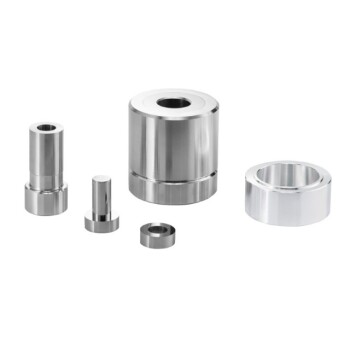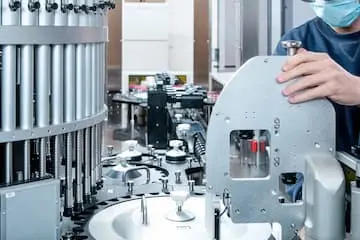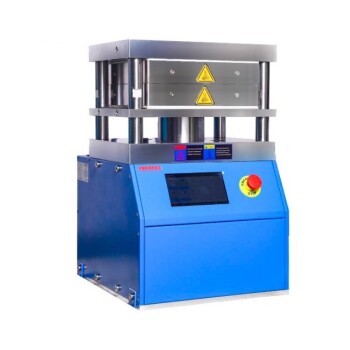The Hydraulic Lab Pellet Press is widely used in material research labs, pharmacies, catalytic reactions, ceramics, and electronic industries. It is a highly efficient equipment for sample preparation, thanks to its small footprint and easy portability. Moreover, it can work inside a vacuum glove box, making it suitable for processing under vacuum environments.
Toggle Categories
Get Instant Support
Choose your preferred way to connect with our team
-
Get Free Quote Fill out form for detailed pricing
-
Send Email Detailed inquiry support
-
WhatsApp Quick mobile chat
Response Time
Within 8 hours on working days, 24 hours on holidays
pellet press

Manual Cold Isostatic Pressing Machine CIP Pellet Press
Item Number : PCIM

XRF Boric Acid Lab Powder Pellet Pressing Mold for Laboratory Use
Item Number : PMXB

Laboratory Hydraulic Press Split Electric Lab Pellet Press
Item Number : PCES

Laboratory Hydraulic Press Lab Pellet Press Machine for Glove Box
Item Number : PCG

Laboratory Manual Hydraulic Pellet Press for Lab Use
Item Number : PCMP

Laboratory Manual Hydraulic Pellet Press for Lab Use
Item Number : PCF

Automatic Laboratory Hydraulic Pellet Press Machine for Lab Use
Item Number : PCEA

Laboratory Hydraulic Press Lab Pellet Press for Button Battery
Item Number : PCBP

Ring Press Mold for Lab Applications
Item Number : PMO
There are various types of pellet presses, including flat die pellet presses, ring die pellet presses, etc. The die of the flat die pellet press is flat, and the raw materials are formed into pellets through the die holes under the action of the roller; the die of the ring die pellet press is annular, and the roller rotates inside the ring die, and the raw materials are formed into pellets under the action of the roller and the ring die.
The benefits of using a pellet press include improving the density and uniformity of the product, facilitating storage and transportation, and improving the utilization rate and added value of the product. In addition, the pelletizing process can also add necessary additives such as nutrients, adhesives, etc. to meet specific production needs.
Choosing a suitable pellet press requires considering factors such as the characteristics of the raw materials, production capacity, shape and size of the pellets, and production costs. With the advancement of technology, the efficiency and automation of pellet presses are also constantly improving, which can better meet the needs of modern industrial production.
FAQ
What Are The Applications Of Pellet Presses?
How Does A Pellet Press Work?
What Are The Benefits Of Using A Pellet Press?
What Factors Should Be Considered When Selecting A Pellet Press?
REQUEST A QUOTE
Our professional team will reply to you within one business day. Please feel free to contact us!
Related Articles

The Invisible Geography of Heat: Why "Max Temperature" is a Trap
In thermal processing, maximum temperature is often a vanity metric. Discover why the "Uniform Heated Zone" is the true architect of repeatability.

Why Your Lab's Hydraulic Press Keeps Failing (It’s Not What You Think)
Discover the three 'silent killers' of lab hydraulic presses, like off-center loading and fluid contamination, and how to prevent costly failures.

Why Your Sample Prep Fails: The Hidden Flaw in Your Hydraulic Press
Frustrated with cracked pellets and inconsistent lab press results? Discover the hidden material flaw in your equipment and how to fix it for good.

Why Your High-Temperature Furnace Elements Fail: The Critical Difference in Silicon Carbide
Furnace downtime from failing SiC heating elements costs time and money. Discover the critical material difference that ensures reliability in extreme applications.

Your Hydraulic Press Is Hot. Here’s Why It’s a Bigger Problem Than You Think.
Is your lab's hydraulic press overheating? Learn why this is a critical sign of wasted energy and impending failure, and how to fix it permanently.

How to Choose Laboratory Vacuum Pumps for Maximum Efficiency and Cost Savings
Learn how to choose the right lab vacuum pump for efficiency & cost savings. Compare oil-sealed vs. oil-free pumps & future-proof your investment.

How to use PTFE to improve the working efficiency of pumps and valves
Polytetrafluoroethylene (PTFE) has become a key material for improving the efficiency of pumps and valves due to its unique physical and chemical properties.

Cryogenic Pulverization Technology and Its Applications
Explores the process, advantages, disadvantages, and applications of cryogenic pulverization in various fields.

Application of Liquid Nitrogen in Food Freezing
Explores the use of liquid nitrogen in food freezing, its advantages, methods, equipment, and safety considerations.

10 Common Dry Ultrafine Crushing Processes
Overview of various dry ultrafine crushing methods and their components.

Techniques and Methods of Freeze Pulverization for Powdered Rubber
An overview of various methods for producing powdered rubber through freeze pulverization, including liquid nitrogen and air turbine expander cold methods.

Precision Ceramic Injection Molding: Key Processes
An in-depth look at the stages of precision ceramic injection molding, focusing on grouting, holding pressure, cooling, and demolding.

Choosing the Right Heating Method in Laboratory Experiments
Understanding the differences between metal bath, water bath, and thermostat heating methods for various lab experiments.

Laboratory Heating Equipment Safety
Discusses the importance of safety in using electrothermal thermostatic water baths and constant temperature oil baths in laboratories.

Navigating XRD Testing Challenges
Guide on XRD applications, sample preparation, and data analysis.

In-depth analysis of the key characteristics and advantages of polytetrafluoroethylene
This paper will take an in-depth look at the key properties of polytetrafluoroethylene (PTFE), such as high-temperature resistance, corrosion resistance and low friction, as well as the wide range of applications and advantages in industry and everyday life.

Hazards and Safety Precautions of Laboratory Pressure Vessels
An overview of the dangers and safety measures for pressure vessels in laboratory settings.

Laboratory Safety: Safe Use of High Voltage Equipment
Guidelines for the safe operation of high-pressure equipment in laboratories, including reactors, hydrothermal reactors, autoclaves, and gas cylinders.

Safety Hazards and Precautions for Laboratory Heating Equipment
Guidelines on common heating equipment and safety measures in lab settings.

Laboratory Equipment Safety: Guidelines for Heating Equipment
A comprehensive guide on safe practices for using high-temperature heating equipment in laboratories.


